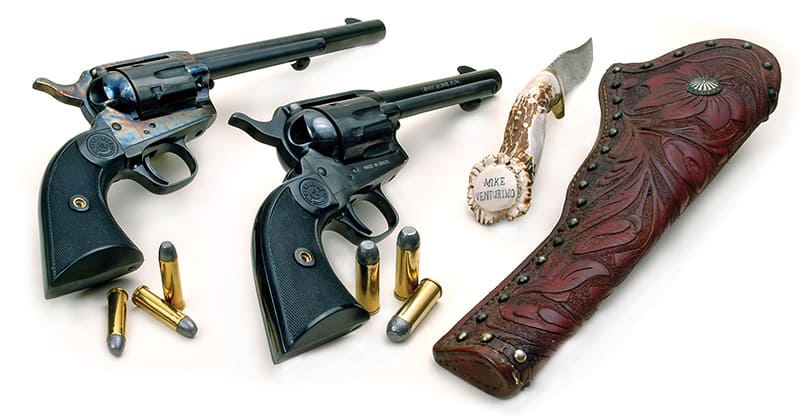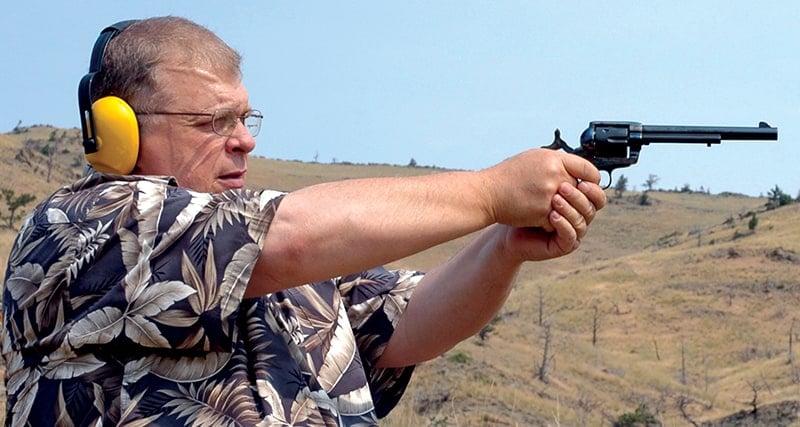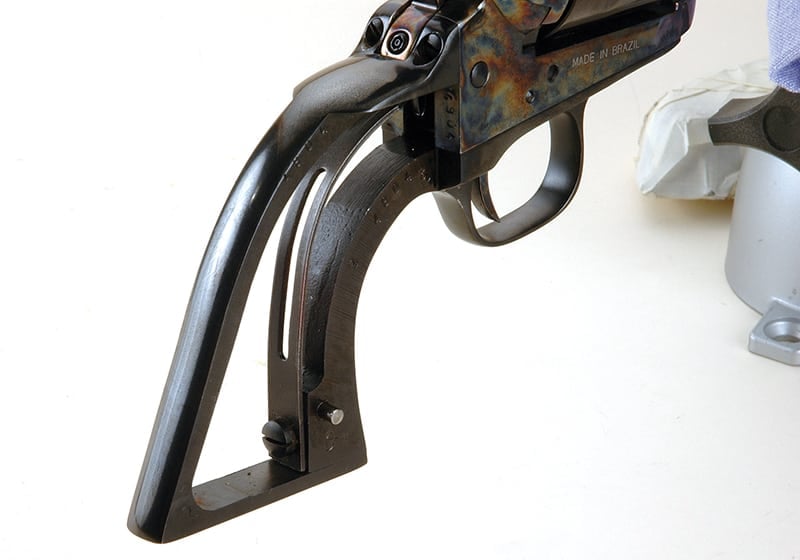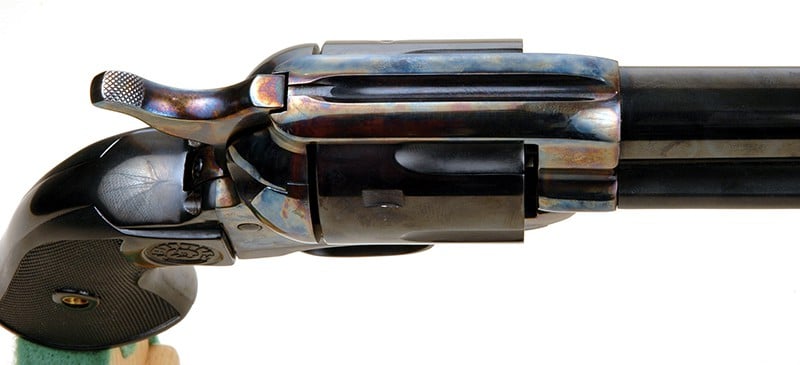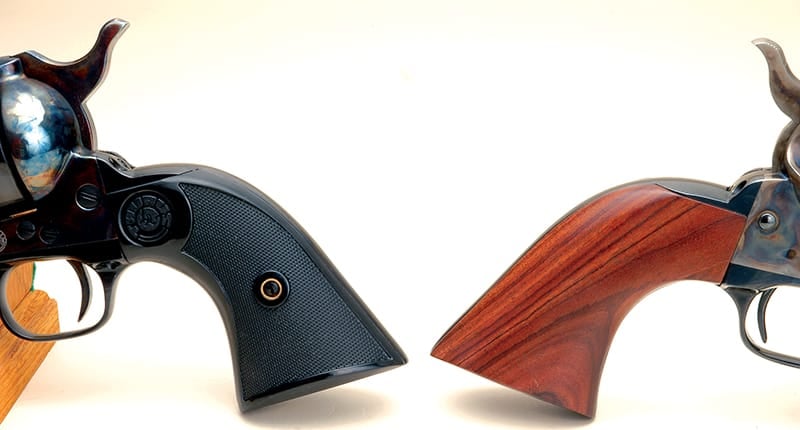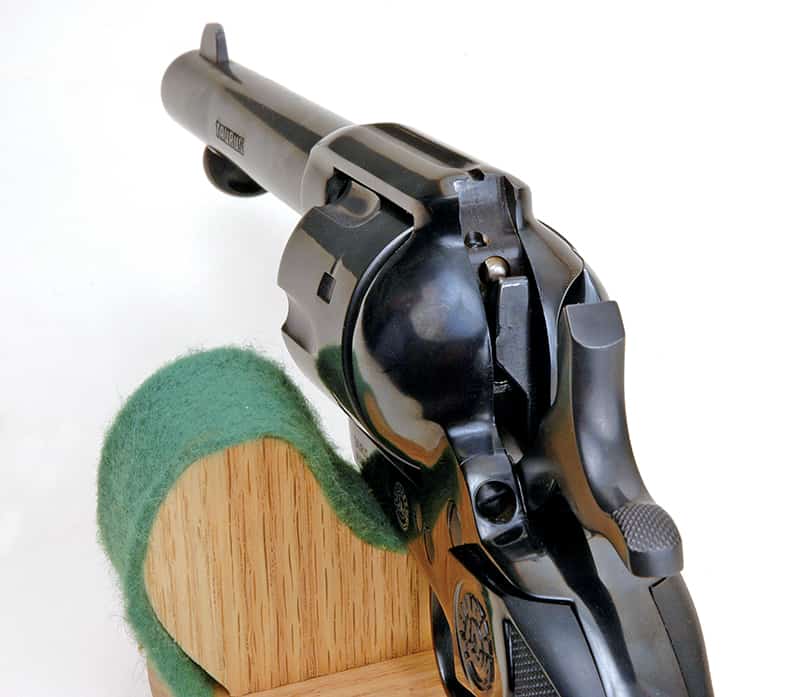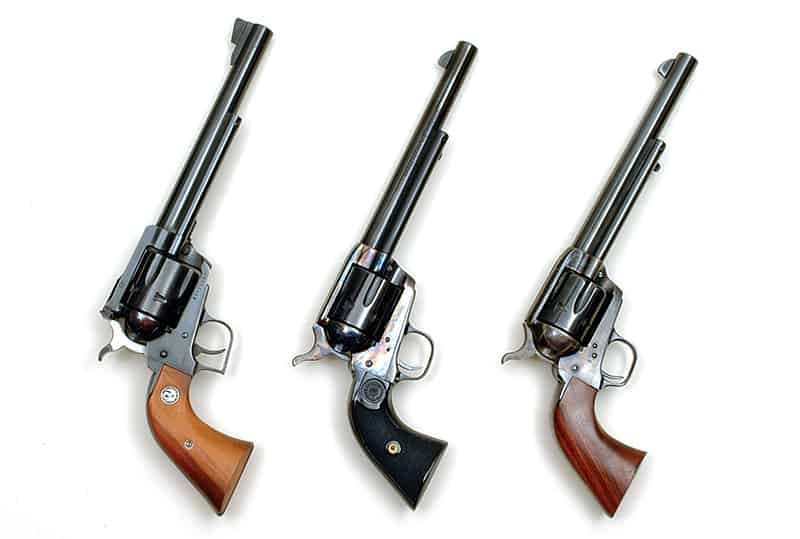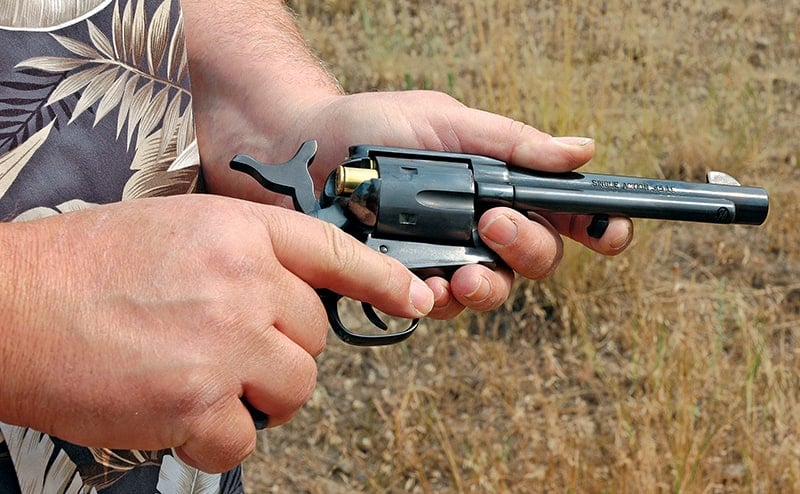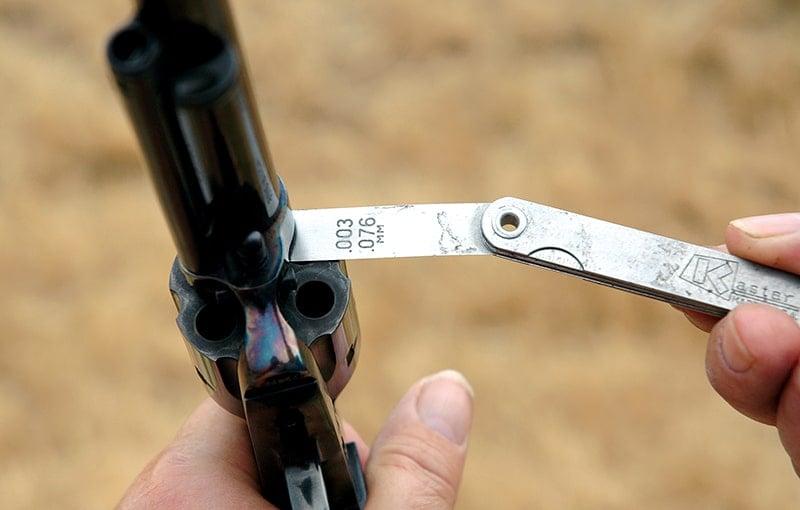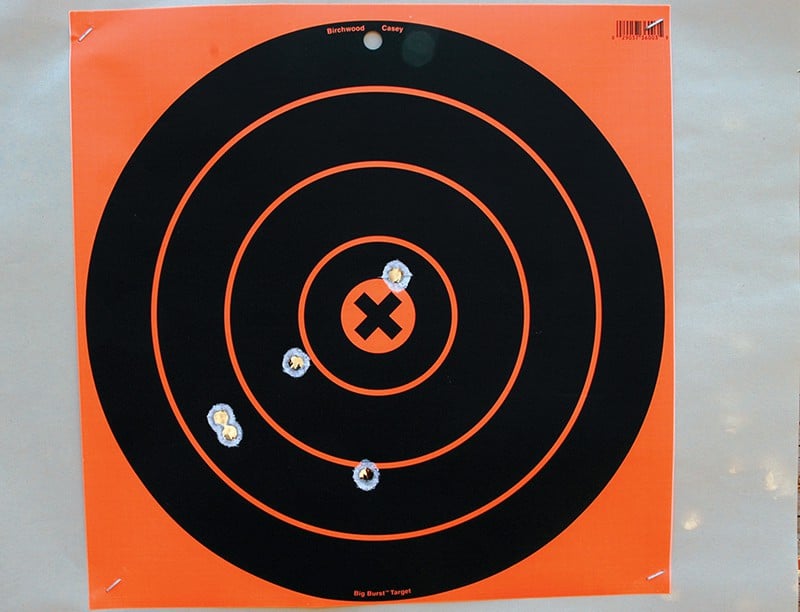Taurus Gauchos!
Single Action-Action
So many clones, copies, replicas and lookalikes of the Colt Single Action Army revolver have come from Italy in the last few decades that new ones hardly gain notice anymore. But, several years ago when I heard there was going to be a single action revolver put out by the Taurus Company of Brazil, my ears did perk up. Heretofore, Taurus has been known primarily for its double action revolvers and auto pistols. I had to wonder what they would come up with for a single action.
All in all, they didn’t do too badly with their Gaucho: the name of which denotes a sort of South American version of cowboy. So obviously the Taurus Gaucho was aimed at the cowboy action market. If it sounds like I’m damning the Gaucho with faint praise don’t take it like that. What Taurus did was not a clone of the good old SAA; it was more of a combination of it and Ruger’s New Model revolvers.
And it’s an interesting combination. The look is most definitely Colt SAA and so is the size. It fits perfectly in SAA holsters. The curves and contours are right. So are many of the details. The front sight is a nicely curved blade with the rear being a groove milled in the frame’s topstrap. The grip frame is Colt SAA all the way; meaning it has two pieces — triggerguard and back strap — and then those two pieces are connected to each other and the main frame by six screws. It has the so called “smokeless powder frame” that was incorporated on the SAA in the mid-1890s. Actually the frame style has nothing to do with propellants, but means it has a transverse, spring-loaded latch to hold the cylinder’s base pin in place.
Coltish
The Gaucho sounds like a Colt SAA and loads like a Colt SAA. That latter point means the hammer is pulled to a half cock notch, which in turn frees the cylinder for rotation so cartridges can be inserted one at a time by means of a loading gate on the frame’s right side. As the hammer is being pulled back it gives those four distinct clicks so identified with the good old Peacemaker. With the old Colt the first click occurred when the hammer was pulled back into its so-called “safety notch.” The Gaucho also has a click as the hammer reaches that notch but — LISTEN UP HERE — the Gaucho is not meant to be carried with the hammer resting in that notch. It is meant to be carried with the hammer fully down. Read on.
Where the Gaucho looks and behaves like a Ruger New Model is in its transfer bar system of ignition, and its various finishes. Instead of a firing pin mounted on the hammer, the Gaucho has a hammer with a series of steps. None of which will touch the frame-mounted firing pin unless the trigger is pulled. When that is done a piece of steel raises between the hammer and firing pin allowing energy to be transferred from the falling hammer to the pin. No pull on the trigger means no piece of steel raised to allow energy transfer. This means that technically the Gaucho can safely be carried with six rounds loaded, as opposed to the Colt SAA, which can only be carried truly safely with five rounds loaded and the hammer resting down on the empty sixth chamber.
When I dismounted the hard rubber grips from my sample Gauchos I was truly surprised to see -the mainspring is a leaf type instead of the coiled springs so common with modern designed single action revolvers. Furthermore, their actions were nice and smooth right out of the box, unlike many leaf spring powered single actions that are overly heavy before being slicked up by a gunsmith. After the grips were dismounted I saw why. The Gaucho’s leaf mainspring is slotted right down the middle so as to make it less sturdy. Many gunsmiths grind original Colt mainsprings thinner in order to make them lighter, or replace them with slimmer after market ones. This slotted mainspring of the Gaucho was the first of its type I had come across.
Gripping
Those hard rubber grips deserve a few words. They are nicely done with very fine checkering and the Taurus logo in a circle. They are also not overly thick as with some replica single actions or Colt’s own hard rubber grips nowadays. They also fit the grip frame nicely, meaning each set are on the revolver’s grip frame as it is polished, instead of just having been made in large batches and screwed onto a revolver indiscriminately. Also the shape of the Gaucho grip frame closely approximated a Colt SAAs, and since their frames are handheld during polishing no two are exactly alike. In fact I had a set of un-mounted grips for a Colt SAA setting on the shelf and to my surprise they were almost a perfect fit for one of the Gaucho’s grip frames.
But, here’s a bit of personal opinion. No type of grip on a single action revolver is more elegant and functional than the one piece type. In fact such are so study that they are what the US Cavalry desired on their revolvers when ordered for hard horseback use. With its two-piece grip frame the Taurus Gaucho would be a natural for one piece grips of exotic materials, and South America is certainly a place where beautiful woods abound. My free advice to Taurus would be to offer nicer one-piece wood grips as an option.
Moving on, an examination of the Gaucho cylinder shows it’s more related to Ruger’s than to Colt’s. That’s because there is no separate cylinder pin bushing as with Colt SAAs (pressed in or slip fit). That’s not a problem unless the revolver gets fired so much the cylinder develops end-shake, which could happen, as cowboy action shooters fire thousands of rounds through their revolvers in even a single active season of competition.
Above I said the Gauchos’ finishes remind me more of Ruger single action than Colt SAAs. The two sent to me are full blued or blue with a so-called color case hardened frame. The full blued revolver looks pretty good. The preblue polish was done by a skilled workman because the edges and corners are sharp and crisp. However, I can’t be as positive about the so-called color case hardening. It’s not real color case hardening but is an applied finish meant to resemble such. It doesn’t. And you have to look at the revolver’s frame to see that it was meant to look like color case hardening instead of just being a poor blue job. A third finish available is stainless steel given enough of a polish to resemble nickel-plating. I would much prefer that to painted-on “case colors.” My opinion, of course.
There are two other features of the Gaucho I don’t care for. One is that the ejector rod housing screws directly to the barrel instead of into a stud inset into the barrel as with the Colt SAA. This is a common thing with replica single actions, and it may be a small point. However, if someone is hamhanded with a screwdriver and strips out that screw hole in the barrel then they will be forever screwed (What a pun! Am I clever or what?). My other disaffection is the lack of a firing pin on the hammer. I know it’s a small point, and I know you don’t see the hammer when shooting the gun. I just know that engineers like to engineer things so I’d like to see one design a single action safety system wherein the hammer was still mounted with a firing pin.
Sizing Up
After looking over the two Gauchos sent to me it was time for a few measurements. The .357 Magnum sample with 7 1⁄2 inch barrel would accept a .003″ feeler gauge between barrel and cylinder, but not a .004″ one. Its trigger pull weighed 3 1⁄2 pounds as an average of five tries with one of Lyman’s digital gauges. The .45 Colt, 5 1⁄2 inch sample would only barely accept a .002″ feeler gauge and not a .003″ one. I consider that too tight, and wondered if the revolver would bind from powder and lead fouling in extended shooting. It did not. Its trigger pull measured 2 1⁄2 pounds on the average.
After all examinations and measuring were done it was finally time to shoot the Gauchos. Because these revolvers were obviously intended for cowboy shooters that type of .357 Magnum and .45 Colt factory loads were fired with the handguns mounted in a Ransom Pistol Machine Rest. The .45 Colt gave superlative accuracy with most shots of a 12 round string cutting a ragged hole at 25 yards. The .357 Magnum was a bit less precise with most of its groups running in the 2″ to 3″ range.
Shot Well, Handled Well
Firing from two handed, standing position at 50 feet, the .45 Colt Gaucho’s point of impact with 250 grain Black Hills factory loads was about 4″ above point of aim and about 1.5″ left. The .357 Magnum, again with Black Hills factory load (158 grain cowboy-type) was just a pinch to the left but 4″ above point of aim. It’s relatively easy to adjust a single action’s point of impact laterally by turning the barrel, but bring one down that hits high requires a taller front sight. That is a tall order (Another clever pun here!).
All in all the Taurus Gauchos are pretty decent single actions. They shot well, handled well, and are a combination of both traditional and modern.

Get More Revolver Content Every Week!
Sign up for the Wheelgun Wednesday newsletter here:

